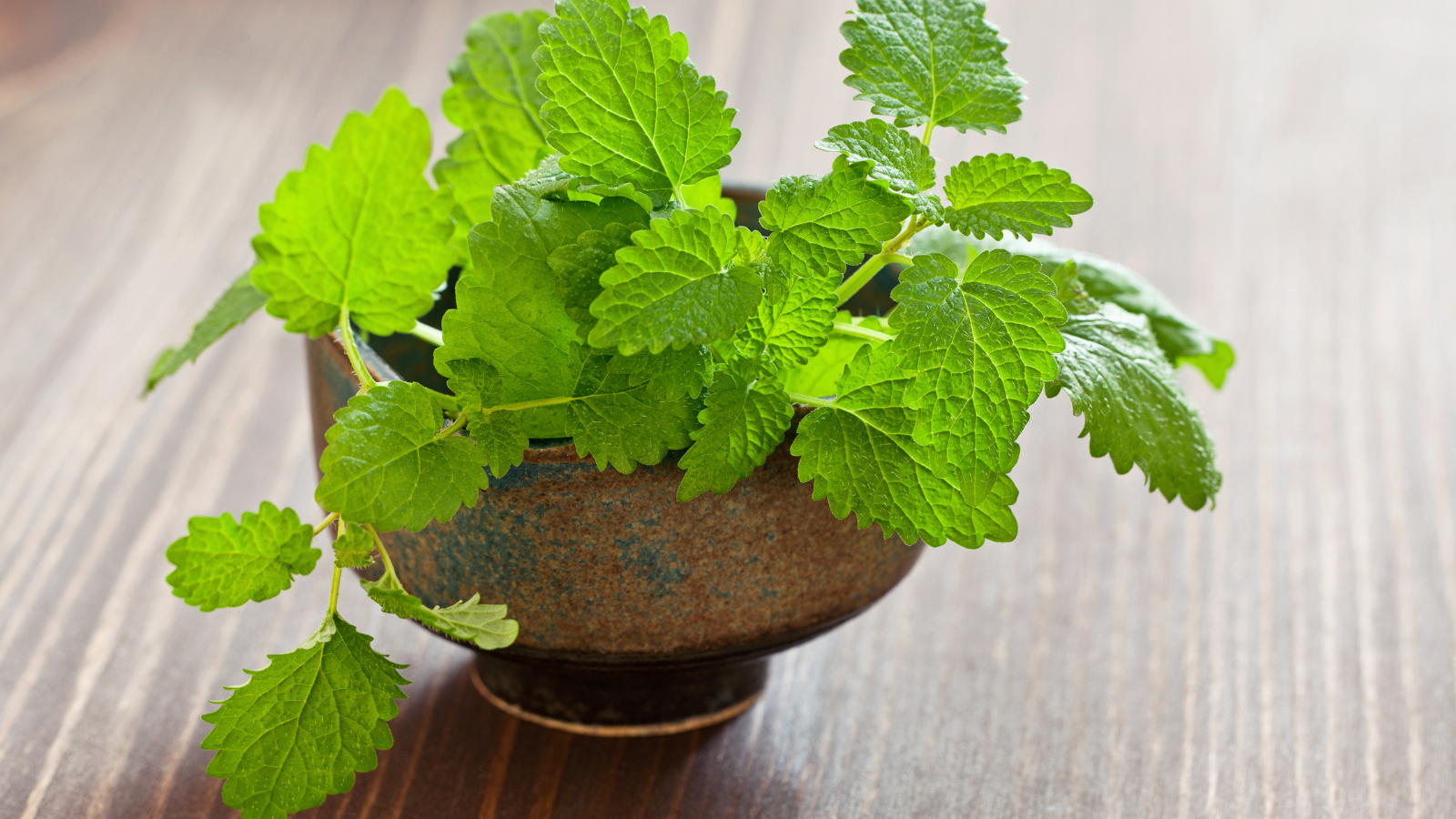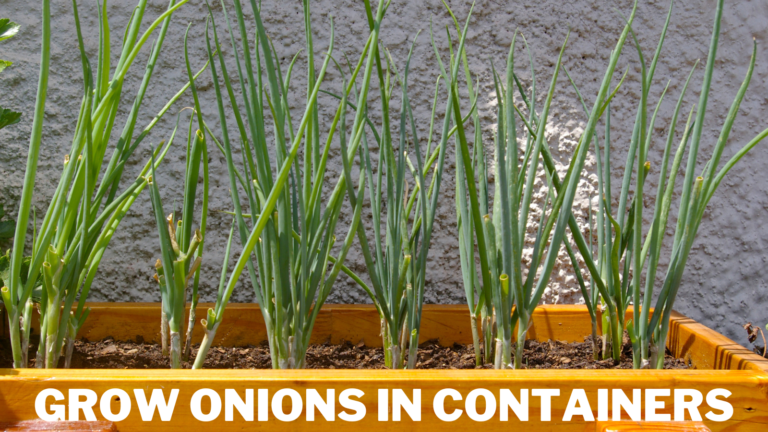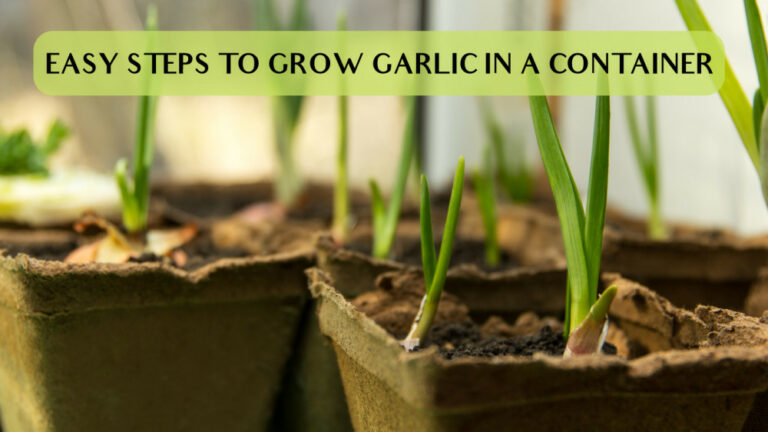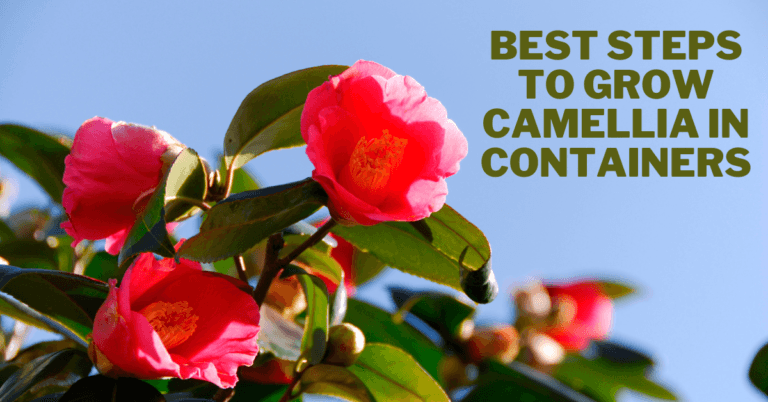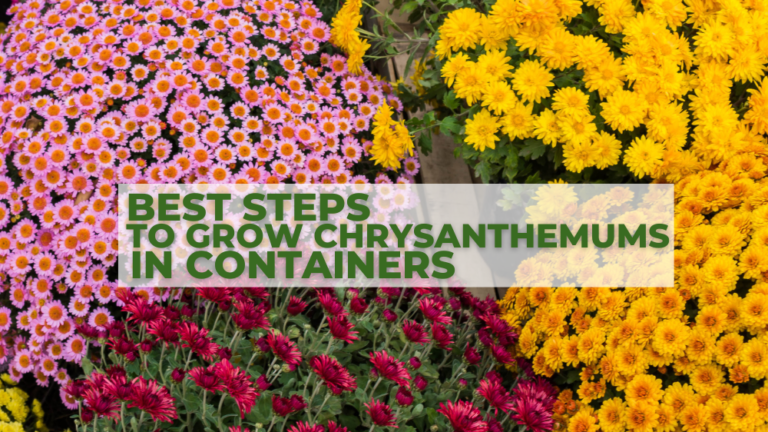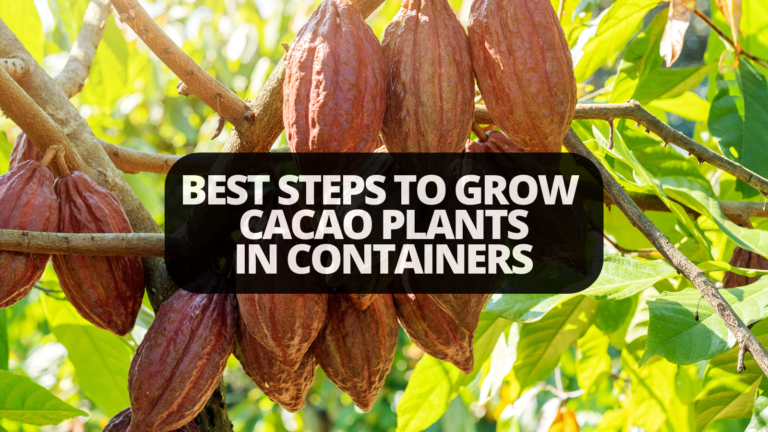Best Tips Of Growing Lemon Balm In Containers
Best Tips Of Growing Lemon Balm In Containers
Ancient lemon balm is a mint-related herb that is native to southern Europe. Its similar wrinkled oval-shaped leaves and fresh citrusy scent make it a favourite among home cooks to season salads, soups, and other dishes.
Lemon balm as a remedy dates back to ancient Greece and Rome, where its leaves were used in a wide range of tonics and teas, and its essential oils were extracted to treat digestive problems.
Outside, the versatile herb grows quickly; after planting in the early spring, it's not unusual to see a lemon balm plant reach over a foot (and occasionally even two!) in a single growing season.
Because of this, many gardeners decide to grow lemon balm indoors or outdoors in containers to control its invasive nature.
Like many other herbs, lemon balm thrives outside but can also be grown indoors. So, let’s see the process of growing lemon balm in containers.
History & Origin Of Lemon Balm
Lemon Balm, a member of the mint family, has been used for thousands of years and is a fragrant herb that bees adore.
Even the name Melissa, which means “honey bee” in Greek, was applied to beehives to encourage bees to stick together and draw in more.
The phrase “it makes the heart merry” was first used by early herbalists like Avicenna and has persisted throughout history. It is still employed today to treat insomnia, anxiety, and depression.
Another well-known doctor, Paracelsus, asserted that the herb could rejuvenate every organ in the body and even had a remedy called primum ens melissae.
Even members of royalty like King Charles V and the Prince of Glamorgan drank the tea daily because it was so well known as a healing herb.
The Prince lived for a total of 108 years. It was a key component of medieval cordials, also called “elixirs of youth,” because of its reputation for boosting the spirit and heart.
In actuality, the other part of the name of lemon balm, officinalis, refers to the medieval apothecary shop and means “of the workshop.”
According to legend, applying the leaves as a compress while they are steeped in wine is an effective treatment for scorpion stings.
It was rumoured that a decoction of the leaves could be used as a mouthwash for sore teeth. During the Colonial era, housewives added lemon balm to salads, let it float in soups, chopped it in butter, and used it as a garnish for main dishes.
This herb is so well known for being a resident of almost every garden that I won't need to describe it, even though its many benefits shouldn't be overlooked. The Culpeper
Types Of Lemon Balm
The lemon balm plant comes in a wide range of varieties. The most well-liked ones are enumerated below, with detailed descriptions of their ideal growing conditions.
Before you start growing lemon balm in containers, you must know all popular varieties of lemon balm.
1. Aurea Lemon Balm
This cultivar has oval, wrinkly leaves. On erratic spikes, tiny yellow flowers occasionally appear during the blooming season.
The leaves are employed to make lemon juice. This variety differs from others in part because it can thrive in arid conditions.
The plants should be spaced 1 to 2 feet apart during the growing stage to allow room for the roots to expand. This plant typically reaches a height of 2 to 4 feet and a width of about 1.5 feet.
The flowers have a strong, lingering fragrance and are edible. Deer and rabbits are not harmful to this plant.
Early summer to late summer is when this plant blooms. This plant thrives best in partial shade to full sun, and it also grows better in soil that is primarily sandy or clay.
Zones 3 to 7 of the USDA's hardiness chart apply to this plant. The plant requires a typical amount of water and little maintenance to thrive.
Water-soluble, temperature-controlled fertilizers can be used for this plant to receive additional nutrients and grow healthily.
2. Citronella Lemon Balm
You can grow the Citronella Lemon Balm in USDA zones 4 to 9. This cultivar's seeds typically germinate within 7 to 21 days.
This cultivar should ideally be planted by pressing seeds into the ground. The best time to plant this crop indoors is six to eight weeks before the last frost.
The ideal soil temperature is between 65° and 75° Fahrenheit. The plants should be placed 12 to 18 inches apart to allow for growth.
This cultivar requires full sun to grow. The best option for hot climates is partial shade. The soil should be evenly distributed and moist.
To prevent root rot, care should be taken to ensure that the water does not remain on the soil. This cultivar can be used in culinary, ornamental, and therapeutic applications.
It attracts lots of bees and other helpful pollinators. It is one of the most flavorful varieties and has a calming aroma.
This type of lemon balm works well as a mosquito repellent, so you'll love it if you detest mosquito bites.
If it's grown outside, you won't have to worry about those bothersome insects ruining your peaceful time with nature.
3. Variegated Lemon Balm
This variety belongs to the mint family and is a perennial herb. It is best to grow this cultivar in pots because it typically reaches a height of 5 to 7 inches.
This plant, widely used in aromatherapy and culinary preparations, has a potent mint flavour. The leaves are a combination of green and yellow.
Its vibrant colours can make any garden bed look extremely attractive. A large number of honeybees are drawn to the garden by the foliage.
When this plant blooms in the summer months, white flowers appear. This strong grower occasionally needs to be pruned to develop into a healthy plant.
It should be noted that this plant self-seeds, making it very simple to grow. This variety also requires full sun to thrive, along with fertile, well-drained soil.
4. Lemonella Lemon Balm
Of all the varieties of lemon balm, this one has the strongest fragrance. The leaves of this plant are used in salads and soups.
It is used in teas to calm the nerves and has many health advantages. Additionally, it is used to create face washes for skin prone to acne. This variety also functions as an insect repellent when applied topically.
5. Quedlinburger Lemon Balm
This cultivar contains more essential oil than other cultivars of the same plant. It has a lovely lemon scent and a lot of cosmetic and therapeutic benefits.
Perennial in nature, this plant is very simple to grow. It usually has a width of 40 cm and a height of 30 cm.
Its ally plants are tomatoes, mint, chives, basil, and parsley. The best time to grow this plant outdoors is from February to July.
The germination of the seeds takes place for 1 to 2 weeks. It may take between 40 and 60 days to harvest.
Care should be taken when sowing to leave a 2 to 3-cm gap between each plant. This guarantees that the roots have enough room to spread out. This cultivar requires full sun to grow.
There should be some partial shade for this plant to grow optimally in areas with intense sunlight. Well-drained, fertile soil is also required for this plant's healthy growth.
Fertilizer is not necessary, but regular watering is. After the plant reaches a height of 30 cm, regular trimming can help it develop into a vibrant plant. This cultivar draws ladybirds and butterflies while keeping mosquitoes and fleas away.
6. Lime Lemon Balm
This variety has leaves that are vibrant green and smell strongly of lime. It can withstand drought and is comparatively simple to grow.
It is a perennial, so plants should be spaced 18 to 24 inches apart to ensure proper air circulation during cultivation.
Additionally, this plant grows best in full sun or partial shade. The seeds of this variety take about two weeks to sprout.
This plant is very beneficial due to the many advantages it provides. Aside from that, any garden can look better thanks to its colourful foliage.
Steps Of Growing Lemon Balm In Containers
Time To Plant
Lemon is best planted in the spring after the last frost because it thrives in cooler climates. If the weather cools down later in the summer, you can also plant it.
Lemon balm can also be grown indoors. Select a sizable pot at least 6 to 8 inches (15 to 20 cm) deep and wide, and place it somewhere that will receive a lot of daytime sun.
Purchase Seeds For Growing Lemon Balm In Containers
Lemon balm can be grown from seeds or seedlings, young plants with emerging stems. Although lemon balm seeds are pretty hardy and typically sprout without much trouble, you'll generally have more success using seedlings. Lemon balm seeds typically take six weeks to mature into seedlings.
You can take a shoot from a lemon balm plant that you or a friend already own and put it in a glass of water.
Once the shoot starts to take root, you can plant it in the ground or a container after daily water changes.
Grow Lemon Balm From Cuttings
If you want to grow more lemon balm, you can take a cutting from another plant and root it in the soil. This is because lemon balm grows from cuttings very quickly.
Cut a stem 4-6 inches long, then remove the lower two inches of leaves to take a cutting.
Place the stems in a pot filled with moist, soilless potting mix, leaving only the leaves protruding above the surface.
Water the area around the cutting, but avoid watering directly on top of it to prevent it from being uprooted from the ground.
Until new roots start to form, which should take about two weeks, keep your plant in a warm location with lots of sunlight. If your lemon balm grows in a small pot and you have new roots, it's time to move it to a bigger pot.
Container Requirements Of Lemon Balm
To accommodate the plant's robust and spreading root system, lemon balm pots should be 8–10 inches long and at least 12 inches deep.
Lemon balm spreads quickly and grows bushy and tall (up to 18 inches), much like its cousin mint. Small pots for this hardy herb will work, but if you have larger ones or a large 10-gallon grow bag, use those instead.
I would avoid dark plastic or glazed containers because lemon balm prefers shade and more excellent soil, which absorbs and holds heat.
But if the lemon balm is all you have, I wouldn't worry too much about it because it is hardy and can grow almost anywhere. Drainage holes must always be in lemon balm containers to avoid soggy soil and root fungus.
Soil Requirements For Lemon Balm
The best soil for lemon balm plants is slightly sandy and well-drained. Most common potting soils are suitable, but if your mixture is too dense or retains too much moisture between watering, mix in sand or a drier soil variety, such as a cactus mix.
Additionally, your soil's pH should range from neutral to acidic, with the ideal range falling between 6.7 and 7.3.
To reduce the possibility of the herb becoming waterlogged or the roots rotting, choose a container for your lemon balm plant with lots of drainage holes.
A clay or terracotta pot can also be helpful because the porous substance will aid in wicking any additional moisture from the soil.
Location Requirements Of Lemon Balm
The best environment for lemon balm growth is one with direct sunlight. However, because it can tolerate some afternoon shade, it can thrive in a location with some shade.
You might want to plant the lemon balm in a container even if you intend to grow it outside. You can easily move it around your deck or yard to find the perfect location.
Fertilizer Requirements Of Lemon Balm
Lemon balm doesn't need a lot of fertilizer for healthy growth. Adding some slow-release fertilizer to the soil is still a good idea to ensure that the plants get a consistent supply of nutrients over time.
A slow-release fertilizer with a 19-19-19 ratio of nitrogen, phosphorus, and potassium is recommended for growing lemon balm.
Read the fertilizer label to find out how much fertilizer to add to your lemon balm plants and how frequently you should reapply it.
Water Requirements Of Lemon Balm
Lemon balm needs moist soil for healthy growth. It is best to water it once a week, being careful to water the plants evenly so there are no puddles but the surface is moist.
You may need to water the lemon balm twice a week if you live in a dry area or have particularly hot weather. To make sure the soil is still moist, check it every day. Avoid overwatering the lemon balm to prevent the growth of powdery mildew.
Temperature & Humidity For Lemon Balm
The lemon balm plant is not overly particular about its indoor environment. Generally speaking, it's best to keep your herb away from drafty, chilly, or hot air, such as in front of an air conditioner or near a radiator.
Additionally, the lemon balm does not require a humid environment to grow, so you won't need to worry about using a humidifier to raise the air's moisture content.
Propagating
Lemon balm is a self-seeding plant, which means that it disperses its seeds outdoors to promote further growth (hence why some gardeners consider it invasive).
The majority of indoor growers, though, won't see their plants produce seeds. Instead, if your lemon balm plant bolts (starts to flower), it is advised to get rid of it because the flavour and potency of the leaves will be reduced.
New plants can be quickly started from packaged seeds (they will sprout in a little more than a week), or you can buy new seedlings at your neighbourhood garden center.
Mulching Of Lemon Balm
Mulch is beneficial to add around the lemon balm once a year to keep the soil moist and add extra nutrients.
Choose an organic mulch, then cover the base of the plants with about 2 inches (5.1 cm) of it. Compost, leaves, grass clippings, wood, and bark make organic mulch. Plants can receive mulch either in the spring or the fall.
Watch out for the mulch that surrounds the plants. You might need to add it more than once a year if it gets washed or blown away.
Trim Fallen Leaves and Flowers
Verticillium wilt and powdery mildew are just a few illnesses affecting lemon balm. Cut off dying flowers or leaves as soon as you notice them, and keep your plants healthy.
Trimming healthy leaves is also a good idea to ensure efficient air circulation around the plants. When the plants have gotten too big, cut them back to ensure there is still space between them. Lemon balm rejuvenates itself well.
Harvesting Of Lemon Balm
Pick a few (or a handful) leaves when you need lemon balm. Pick leaves regularly throughout the summer to keep them fresh and promote growth. It can also be dried like other herbs, but the flavour and scent significantly diminish.
You can reduce it by a third or even more if you need a lot or want to dry or preserve some of it. Once or twice each season, some gardeners prune lemon balm and other herbs back to just a few inches above the base to encourage new growth.
Use garden shears to prune off more significant amounts to prevent damaging the stems. It will be able to recover healthily and productively as a result. Lemon balm is a robust plant that can be severely pruned (down to about one-third of its original size) and quickly regrow with new growth.
If you choose this route, I would only try it on mature plants and give it lots of time between harvests to grow into a complete, bushy plant.
If your plant becomes stressed due to a lack of water, pests, or other problems, you should try this.
Snip off the affected leaves and branches to keep the rest of the lemon balm plant healthy if you see any signs of mould or mildew on your plant.
Harvesting the leaves before they flower is best if you plan to use them in cooking. When a plant blooms, it directs more energy toward the flower and less toward the foliage, which results in some potency loss and bitter leaves.
Pests And Diseases Of Lemon Balm
You should be conscious of pests and diseases when growing lemon balm in containers. Lemon balm is generally disease-resistant, so many gardeners enjoy growing it.
However, there are still a few things to be cautious of. Overwatering or poor drainage can lead to root rot and powdery mildew.
It is simple to overwater or water plants too frequently. Try watering your lemon balm every few days rather than daily.
You can ensure it will succeed over the long run by giving it deep watering instead of frequent ones.
Benefits Of Growing Lemon Balm
Lemon balm from the garden can be used in many different ways, and it benefits you and the local wildlife.
1. Lemon Balm And Bees
Lemon balm is a great plant for attracting nectar, making it a favorite of bees, hummingbirds, and butterflies.
Lemon balm has been grown close to new hives for years to draw bees there. Even though this is not to be confused with the red perennial known as bee balm, botanically known as Monarda, it occasionally goes by the common name of bee balm.
2. Lemon Balm For Skin Care
Lemon balm can be used, like other herbs, to create your own soap, lip balm, room spray, and various other homemade products.
Use lemon balm as a lip scrub, facial treatment, or bath soak if you enjoy making your own cosmetics.
The aroma is wonderful, and there are many potential advantages. To find out more, contact your favorite nearby herbalist or health store.
3. Lemon Balm Tea
Drinking lemon balm tea is recommended during the cold and flu season. To make tea, you can use dried or fresh leaves.
Gather about 15 to 20 leaves for fresh, then steep them in water. Then, if you'd like, add honey, sugar, or any other sweeteners you enjoy having with your tea. You can drink lemon balm tea all year round if you choose dried leaves.
4. Insect Repellent
Why does lemon balm keep insects at bay? Citronellal, which is present in the leaves and repels mosquitoes and other insects, is present in them.
The crushed leaves can be used as a quick, simple, and all-natural backyard repellent by rubbing the oils on your skin.
Alternatively, you could create a homemade lemon balm insect repellent to apply during the wettest seasons of the year.
When making a repellent, some people combine several herbs; lemon balm is always one of the main ingredients.
Health Benefits Of Lemon Balm
1. Relieves Stress
Lemon balm is reputed to relieve stress, promote relaxation, and elevate your mood. According to a Reliable Source, lemon balm helped reduce the depressive side effects of psychological stress brought on by doing lab work.
Lemon balm users expressed greater calmness and less alertness after taking the supplement.
Despite being a double-blind, placebo-controlled study, it only included 18 participants. More study is required to develop these findings further.
2. Reduces Anxiety
Additionally, lemon balm may be used to lessen anxiety symptoms, such as jitters and excitement.
The effects of foods containing lemon balm on mood and cognition were studied in 2014 research.
Yogurt and a beverage containing the supplement were combined with either natural or artificial sweeteners.
Reduced anxiety levels were among the positive effects on mood that participants in both groups reported. Although this appears promising, more studies are required to assess its effectiveness fully.
Use three times daily by taking 300–600 mg of lemon balm. In cases of severe anxiety, a higher dose may be appropriate.
3. Treats Cold Sores
Lemon balm can even be applied topically when a cold sore first appears. In a 1999 study, participants applied lemon balm or placebo cream to the injured area four times per day for five days.
Researchers discovered that participants who applied the lemon balm cream had fewer symptoms and recovered more quickly than those who did not.
Additionally, the researchers hypothesized that applying lemon balm cream could help extend the time between outbreaks of cold sores. Additional research is required to explore these findings further.
4. Reduces Headache Pain
Lemon balm may help treat headaches, particularly if they are brought on by stress. You can relax, release tension, and loosen up your muscles with its calming qualities.
Additionally, it is believed that ingesting the herb can aid in loosening and opening up constricted blood vessels, which can worsen headaches.
5. Reduces Toothache Pain
Lemon balm may be the best option for treating toothache pain due to its pain-relieving qualities.
This natural remedy is thought to target inflammation in the body and has calming effects. These results need to be confirmed by additional research.
6. Reduces Menstrual Cramps
Additionally, studies show that lemon balm may treat premenstrual syndrome and menstrual cramps (PMS).
The effectiveness of lemon balm in lessening the severity of cramps in 100 high school girls was studied.
The girls were given either a lemon balm essence or a placebo for three consecutive menstrual cycles.
The severity of PMS symptoms was examined before the trial and one, two, and three months later. The individuals who took the lemon balm reported a marked improvement in symptoms. These results need to be confirmed by additional research.
7. Treats Nausea
Lemon balm could positively affect your digestive system, which could also help with nausea symptoms.
According to a 2005 review analyzing the findings of several studies on lemon balm, the herb is effective in treating gastrointestinal symptoms like these. Even though this is a positive development, it's critical to understand the study's constraints.
Numerous studies examined the use of lemon balm in combination with other herbs. The efficacy of lemon balm, when used on its own, requires more investigation.
8. Relieves Heartburn
Lemon balm may improve your digestion if you frequently have pain and discomfort in your stomach.
In a small study published in 2010, the impact of a lemon balm-infused cold dessert on functional dyspepsia was examined.
After a meal, participants ate a sorbet, either with or without the herb. Both kinds of desserts reduced the severity of the symptoms, but the lemon balm dessert had an even greater impact. More study is required.
9. Treatment Of Insomnia And Sleep Disorders
Lemon balm and valerian combined may help treat insomnia and other sleep disorders. In one 2006 study, researchers discovered that children who received a combined dose saw symptoms improve by 70–80%.
Lemon balm was regarded as a good or very good treatment by both researchers and parents. However, these results still require further study to be confirmed.
10. Reduces Cognitive Capacity
The effects of lemon balm on enhancing cognitive function were also examined in the same 2014 study.
Cognitive exercises involving memory, math, and focus were given to the participants. According to the outcomes of these computerized tasks, those who consumed lemon balm outperformed those who did not.
Even though the levels of alertness and performance among these participants did increase, fatigue may eventually set in.
Lemon balm's absorption rate changes when combined with food, which may have affected how effective it was. More investigation is required.
Conclusion
Lemon balm is a thorny perennial herb with creamy-white or light purple summer flowers and deliciously fragrant lemon leaves.
It grows quickly and easily in the sun or very light shade. The leaves make a zingy lemon tea and a lemony kick for salads, sauces, and fish dishes. You may get recipes from here if you would love to try some delicious lemon balm recipes.
I trust you enjoyed this article on the Best Tips Of Growing Lemon Balm In Containers. Please stay tuned for more blog posts to come shortly. Take care!
JeannetteZ
>>>Please click here to read my all-inclusive article about Container Gardening<<<
>>>Are you interested in homegrown herbs and medicine? Please click here to find out more about it!<<<
Your Opinion Is Important To Me
Thoughts? Ideas? Questions? I would love to hear from you. Please leave me your questions, experience, and remarks about this article on the Best Tips Of Growing Lemon Balm In Containers in the comments section below. You can also reach me by email at Jeannette@Close-To-Nature.org.
Disclosure
This post may contain affiliate links. As an Amazon Associate and other affiliate programs, I earn from qualifying purchases at no extra cost to you. Read my full affiliate disclosure.
You might also enjoy these blog posts:
Brain Training For Dogs Review
Easy Steps To Grow Aloe Vera In A Container
Simple Tips To Grow Snake Plants In Containers
What Is Homeopathy And How Does It Work

